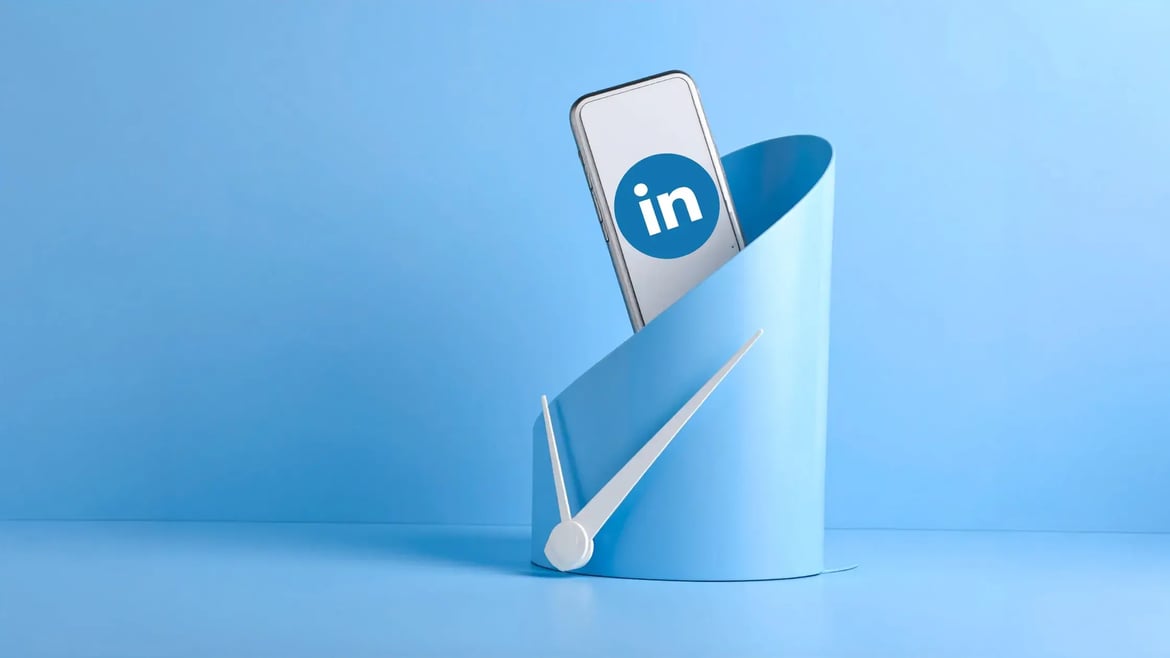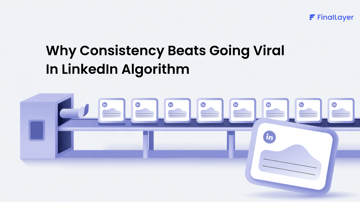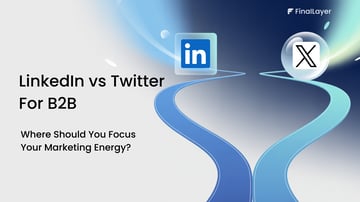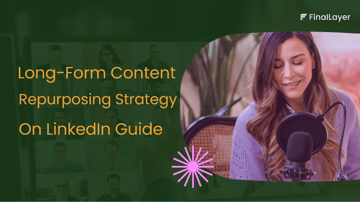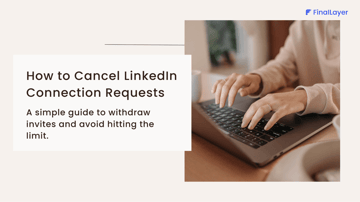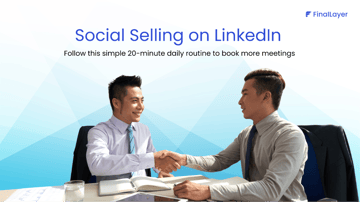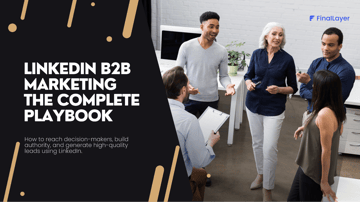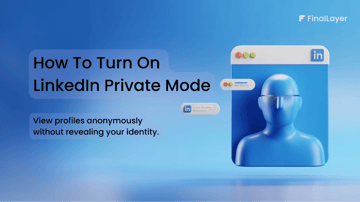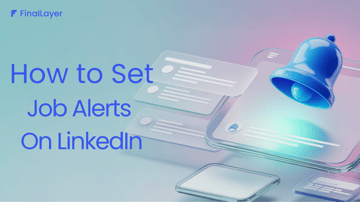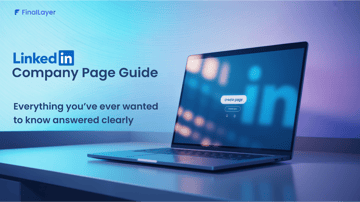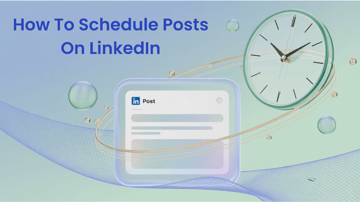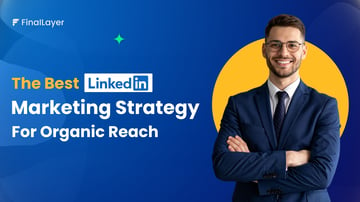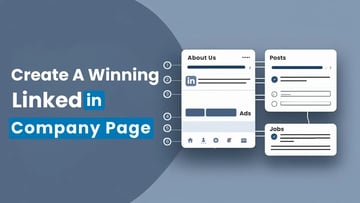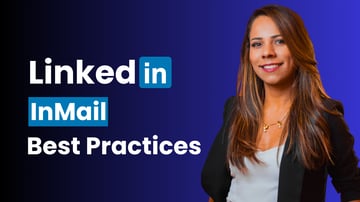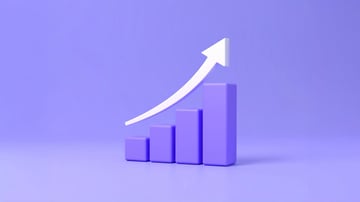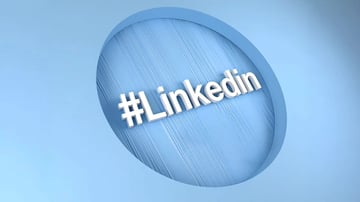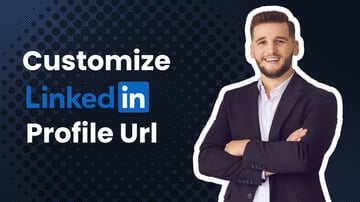Ever wonder why billions of people use LinkedIn? Professionals from all over the world share ideas and opportunities. LinkedIn is also a great place to learn new things. LinkedIn is much more than a Rolodex, that’s for sure! However, timing is key to maximizing its potential.
Understanding how the LinkedIn algorithm works is important for your posts to be seen by a wide audience. Our information, backed by actual data, dives deep into the best times to post.
In this blog, we will analyze the core elements of LinkedIn's success like understanding your audience, industry, and content to ensure targeted engagement, exploring the rationale behind business hour posting, and equipping you with actionable strategies and platform insights to elevate your content planning and achieve concrete results.
LinkedIn has over 1 billion users in more than 200 countries, making it the biggest social networking platform for professionals.
Understanding LinkedIn's Professional Audience
LinkedIn is a highly valuable professional network. It connects people across all sorts of industries. Unlike other social media, it is all about careers. You've got professionals, businesses, and recruiters gathering there.
So, understanding who you're talking to is key. Most LinkedIn users are looking to get ahead in their careers. They want professional insights and networking opportunities. That's how they're thinking when they're on the platform. They're usually online during work hours, often browsing or catching up during breaks to look for work-related stuff.
LinkedIn users come from across the world. Engagement can look different depending on the industry. Tech people might interact differently than healthcare workers. Knowing your audience's industry helps you optimize your posts. If your content matches what they need, and when they're online, you'll see way better engagement and reach. This will set you up for success on LinkedIn.
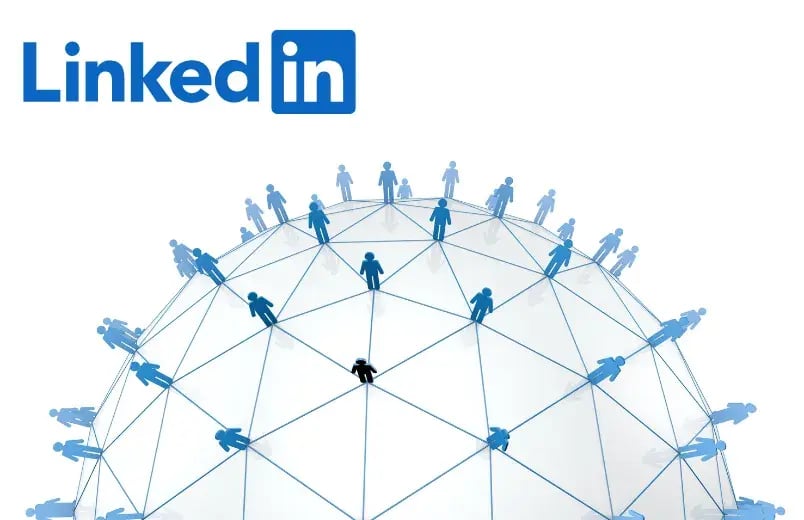
The Importance of Timing on LinkedIn
Why do some LinkedIn posts take off while others don't? A lot of it comes down to timing. Posting at the right time can make a lot of difference. LinkedIn users are typically busy professionals. Everyone is managing a million things. You've got to catch them when they're online and ready to connect.
LinkedIn activity usually spikes during certain hours, and guess what? Those times line up with when people are at work. If you post during those hours, then you can have better engagement compared to regular posting hours. But it is not just about getting seen. It is also about getting people to interact with your post.
A well-timed post can spark some great conversations, which can lead to even more people seeing your content and making new connections. Timing on LinkedIn requires a strategic approach.
Understanding your audience's peak active hours is crucial to get engagement on your posts. Research suggests it is often during work hours, especially around lunch breaks and the end of the day. However, it can also depend on your specific industry. It varies from industry to industry.
A well-timed post can result in higher impressions, better visibility, and increased interactions, leading to more profile visits, connection requests, and business opportunities.
Best Days and Times to Post on LinkedIn
Picking the best day and time to post on LinkedIn comes down to understanding when your audience is most active. Since LinkedIn is a professional platform, users tend to check in during their work hours. However, the ideal timing can vary depending on your industry and how your audience interacts with content.
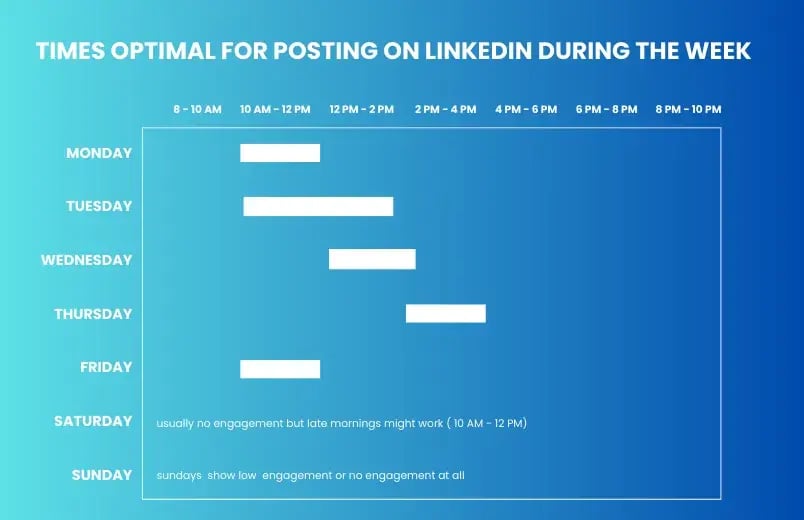
Monday
Mondays can be a mixed bag on LinkedIn. Many professionals start their week, which might mean they're busy catching up with office things and other related work. It is usually best to avoid early-morning posts on Mondays. However, the late morning period can be optimal once the initial rush has cleared.
Tuesday
Tuesdays tend to have higher engagement rates. By this day, professionals have settled into their week. Posting in the mid-morning or early afternoon can be effective. This time fits between busy morning tasks and after-lunch lulls.
Wednesday
Wednesday often sustains the engagement levels seen on Tuesday. Midweek momentum helps capture user attention. Posting around lunchtime can be ideal, as people taking breaks are likelier to engage with LinkedIn content.
Thursday
Thursdays generally show strong engagement. As professionals wind down their major tasks, early afternoon posts can perform well. At this time, users are often active and open to networking or inspiration.
Friday
Engagement can taper off on Fridays when users start to unwind and prepare for the weekend. It is best to aim for late-morning posts, as content shared around this time might catch those looking to wrap up their week.
Saturday
Weekends are quieter on LinkedIn. Professionals often step away from business matters. However, if you must post, try to do so late in the morning. Users might browse casually, but engagement is usually lower.
Sunday
Sundays are traditionally slow days for LinkedIn activity. Many are prepping for the week ahead. Late afternoon might offer a small window of opportunity. Some professionals may check LinkedIn at this time as they plan for their Monday.
Industry-Specific Best Times to Post on LinkedIn
Different industries have unique rhythms and engagement patterns on LinkedIn. What works for one sector might not suit another. Understanding industry-specific trends can enhance your content strategy.
Healthcare
Healthcare professionals often have uncertain schedules. However, midweek, particularly on Wednesdays, can offer increased visibility. Posting in the early afternoon aligns well with common breaks. Content should focus on quick and impactful messages.
Education
Educators generally engage well on LinkedIn during mid-morning hours. Tuesday or Wednesday can see increased activity. These times align with breaks between classes or administrative tasks. Therefore, it is best to avoid busy end-of-week grading periods.
Finance
For finance professionals, early morning postings during midweek are optimal. Wednesdays and Thursdays work well for audience engagement for finance. Mornings before the market opens can capture attention. These times are perfect for sharing market insights and updates on LinkedIn.
Technology
Tech professionals frequently check LinkedIn throughout the day. However, late mornings on Tuesdays and Thursdays yield better engagement. These time slots fit around tech teams' project workflows, and in-depth articles and industry trends resonate well.
Manufacturing
Manufacturing industry posts should mostly target early morning or late afternoon as these are the active times for the manufacturing sector. These periods coincide with shift changes, particularly on Tuesdays. Engaging content could include industry innovations or productivity tips. Monday and Friday are less effective as there is no engagement from the industry.
Marketing
Marketing audiences progress on creativity and inspiration. For this sector, posting on Wednesday and Thursday afternoons, just after lunch breaks, can boost engagement. Marketing professionals often receive posts featuring case studies or creative campaigns.
Retail
Retail professionals have varied schedules, so flexibility is key. Mid-morning posts on Tuesday or Thursday work well. Quick, visual content can capture attention during brief breaks. Avoid weekends when engagement tends to drop.
Time Zone Considerations for Global Audiences
Some of your LinkedIn posts may feel like they are shouting into the void. This is because of the time zone differences between specific countries and geographic regions. With LinkedIn's global reach, time zones are key. If your network stretches globally, you need to be smart when posting.
One trick is to stagger your posts. This way, you can catch people in different time zones to get their attention. Scheduling tools are very helpful in improving efficiency in managing a global posting schedule. Of course, it is always a good idea to focus on where most of your audience lives. Posting during their business hours will get you the most engagement, even if it means you're up late at night scheduling your posts.
Things change, and your audience's habits might shift, so adjusting your posting schedule will keep you on track as you learn more. Being flexible will help maintain engagement across global networks, and keeping things natural and responsive will help you build global connections.
Analyzing Your LinkedIn Analytics for Custom Insights
LinkedIn Analytics is a powerful tool for optimizing your content strategy. It provides data-driven insights about your audience's behavior. Before getting into details, you should make sure to understand your followers. What industries are they in? What are their job titles? Where are they located? This helps you create content they'll actually resonate with.
Keeping an eye on your engagement rates over time will give you a broader insight into what posts are getting the most reach compared to others. Are trends changing the way people consume content? Understand what is affecting your engagement rates.
They tell you how far your content is reaching. If your views are low, rescheduling your posting schedules might be best. See what works best, and then adjust your strategy accordingly.
Analyzing what your competitors are doing will help you understand the trends and posting schedules more, as they give you more insights into what is working the best. Competitive analysis is always a good idea to gain reach and engagement on your posts. Incorporate audience feedback whenever possible into your posts.
Comments and direct messages can reveal valuable insights that analytics may overlook, providing a well-rounded perspective on content preferences. LinkedIn analytics also help in tracking the growth of your network. Notice how your follower count changes over time.
And if your analytics suggest visuals or multimedia are popular, use more of them– especially at the best times to post. Ensure your LinkedIn activities support your overall objectives.
LinkedIn articles and long-form posts
LinkedIn Articles allow for in-depth content sharing among users. They are suitable for exploring complex topics. This feature is crucial for the success of thought leaders. Schedule articles during weekdays, particularly mid-morning. Professionals often engage with this content at their desks.
Ensure your article headlines are compelling. A strong title can draw readers in during competitive times and consider the publication day as well. Share articles when users have more time to read them thoroughly. Early morning or lunch breaks are ideal slots.
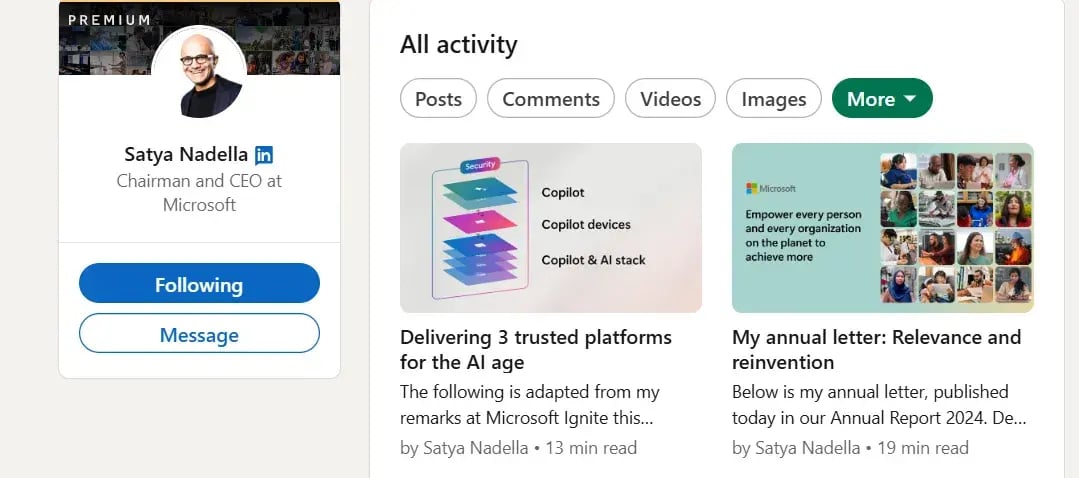
LinkedIn video and live content
Video content on LinkedIn is highly engaging. It appeals to users with its visual and dynamic format. Videos often get higher interaction rates compared to normal posts that only have text. Live content provides opportunities for real-time engagement. Consider time zones and schedule during peak hours for maximum reach.
Users are most active and likely to interact during these days. Create compelling video thumbnails, as first impressions count, so timing should include visual planning. Engage with your audience during the live session. This interaction can enhance your visibility within their network.
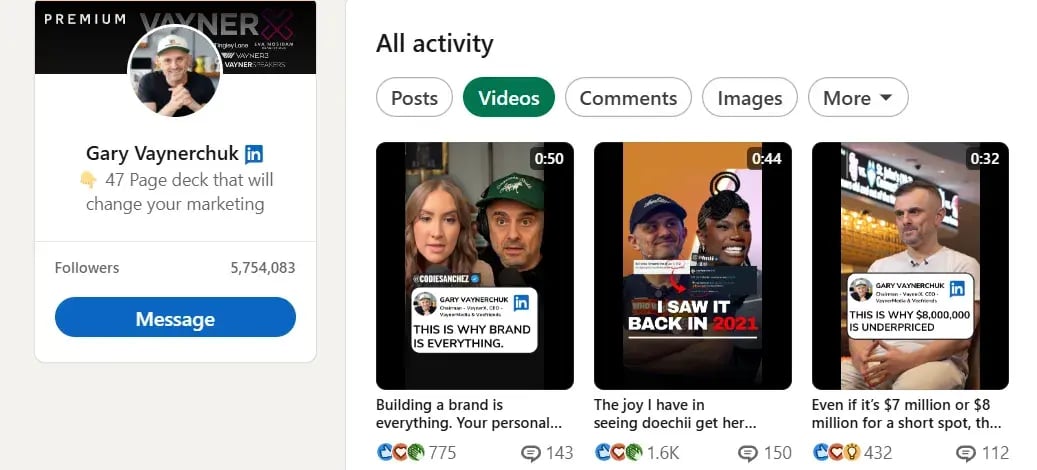
LinkedIn stories and short-form content
LinkedIn Stories, though short-lived, are impactful. They capture quick snapshots of professional life. You can use them to engage with daily active users. Post stories at the beginning of the day because early visibility can increase interactions throughout the day. Adjust your content to industry-specific interests by posting relevant content.
Relevance is key for story engagement. You can utilize time posting to align with audience activity, which is a way to gain engagement. Keep stories concise and focused.
Short-form content should immediately capture and retain attention. Utilize call-to-actions in your stories. Prompting interaction can enhance story performance, especially when strategically timed.
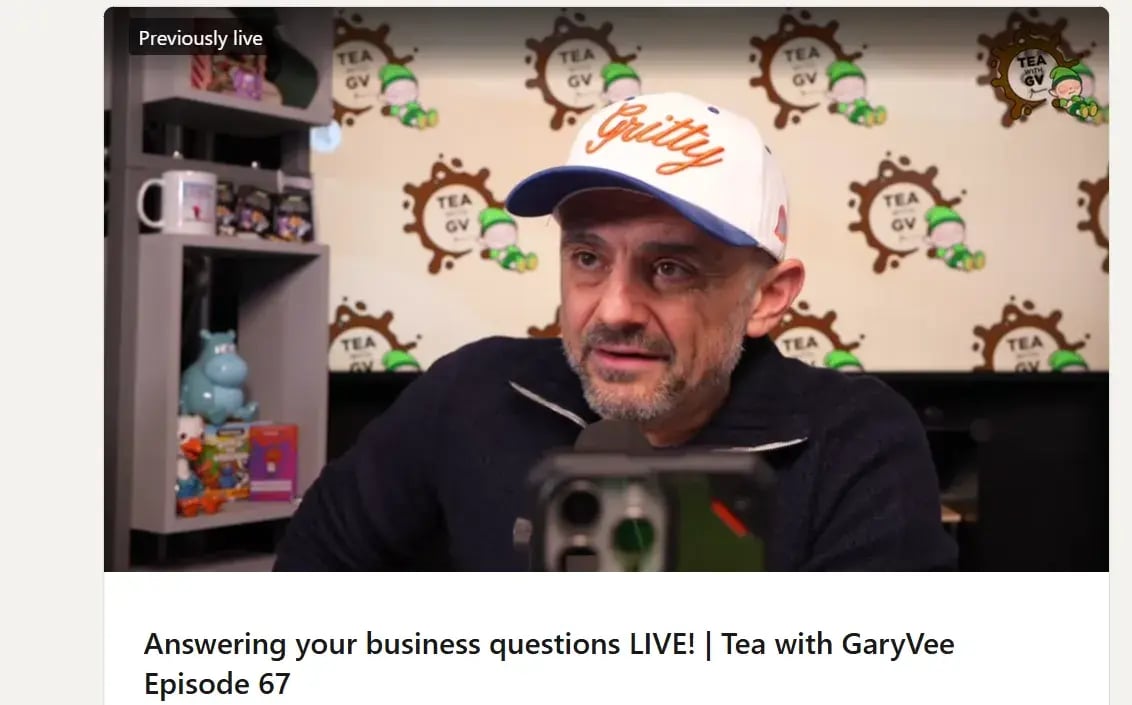
The Role of Content Type in LinkedIn Engagement
Driving engagement on LinkedIn does not happen just by posting. It requires content planning as well. Different content formats can yield varying levels of interaction, and understanding these variations is crucial for a successful content strategy. Video content always continues to grab attention as it is dynamic and gets people sharing and commenting on your content.
If you've got in-depth insights or thought leadership to share, then LinkedIn Articles perform well as they provide an opportunity for in-depth exploration of complex topics. For presenting complex data in a clearer way, infographics offer a visually compelling way to do so. Their conciseness makes them ideal for busy professionals seeking quick yet informative content.
Posts integrating high-quality images tend to attract higher levels of engagement. Visual elements enhance the efficiency of your content and are effective for breaking up text-heavy posts and improving readability. Polls are a valuable tool for directly engaging your audience and stimulating discussion among them.
User-generated content significantly enhances authenticity and broadens your reach. Encouraging employees to share content related to your brand or industry makes it feel more authentic, leverages their personal networks, and fosters a sense of community among them.
Content that poses questions directly invites audience participation and encourages dialogue, as effective questions can spark meaningful conversations among the audience in the comments section. This approach fosters a sense of community and provides valuable insights into audience perspectives.
Sharing timely industry news and updates positions you as a valuable resource within your professional network. Professionals rely on LinkedIn for such information. A diversified content strategy, integrating a mix of text, video, and images, caters to diverse audience preferences and will broaden your potential reach.
These various forms of content will keep your content fresh and engaging. By strategically selecting and timing your content formats, you can optimize your LinkedIn presence and drive meaningful engagement with your target audience.
Seasonal and Trend-Based Timing Strategies
Optimizing your LinkedIn content strategy requires an understanding of seasonal influences on audience engagement. User behavior and platform activity can fluctuate significantly throughout the year, so making strategic adjustments is essential for maximizing reach and impact.
Holidays often lead to shifts in LinkedIn activity, as many people are on breaks during this period. During extended breaks, users may be less active. Adapt your posting schedule to align with these trends and ensure your content reaches its intended audience. Seasonal trends within specific industries can significantly impact your posts' engagement.
For example, retail activity typically peaks during holiday sales periods. Aligning your content with these industry cycles can improve visibility and resonance. Weather patterns can also influence online behavior. Inclement weather may increase the time users spend online, presenting an opportunity to engage a more captive audience.
Fiscal calendars play a crucial role in content planning. Many industries experience heightened activity during quarter-end periods. Be mindful of these cycles to maximize the impact of your posts. Professional events, such as industry conferences, often increase LinkedIn activity as many professionals connect over this.
Strategic posting during these events can enhance visibility and connect you with relevant professionals. Current events and global trends also require attention. Sharing timely and relevant content related to these events can show your awareness and position you as a thought leader.
A dynamic and adaptable approach is essential for long-term LinkedIn success. Continuously evaluating and adjusting your content strategy throughout the year ensures effectiveness and growth.
Scheduling LinkedIn Posts
Streamlining your LinkedIn strategy through efficient scheduling is necessary to maximize reach and engagement. Several advanced tools offering various degrees of functionality and integration are available to assist in this process.
LinkedIn's native analytics tools are crucial for understanding audience activity patterns. Using this data to identify peak engagement times optimizes content distribution and maximizes visibility.
If you want to simplify your LinkedIn posting workflow, you can use FinalLayer. FinalLayer helps you find relevant clips faster for your posts. It also assists you with an AI writer to create descriptions for your posts, and you can post directly to LinkedIn.
Adapting to LinkedIn Algorithm Changes and Updates
LinkedIn's algorithm is constantly evolving. These changes can impact your content's visibility and engagement. You can enhance your engagement by staying updated on these changes and remaining informed about the algorithm, as engagement is a key factor in the algorithm.
Quick adaptation keeps your content relevant. Posts that trigger discussions often perform better. LinkedIn favors posts that keep users engaged longer. Rich media content can help achieve this by experimenting with different post types, like testing articles, videos, and infographics, which can reveal what the algorithm is currently favoring.
Being flexible with your content can help you gain reach. Monitoring performance trends will help you identify algorithm shifts between content. Review your analytics to detect changes in post-engagement and adjust your strategy accordingly. Network engagement also influences content visibility, so engaging with others' posts can boost your own content's reach.
By adapting to algorithm updates, you can perform well with your content strategy and gain followers and engagement on LinkedIn. Continuous monitoring and strategic adjustments are needed to achieve optimal visibility and growth.
Putting It All Together for LinkedIn Success
Understanding your audience and the different types of industry they are from will guide your posting strategies, and recognizing patterns will lead to optimal results for your LinkedIn. Utilizing LinkedIn's unique features will boost one's visibility on LinkedIn, and integrating articles, videos, and live content into LinkedIn posts enhances reach. Data-driven decisions refine your strategy and consistently review performance metrics to discover new opportunities. Your LinkedIn success depends on strategy, timing, and adaptation. By committing to continuous learning and adjusting your approach to stay ahead, you will maximize your results.
